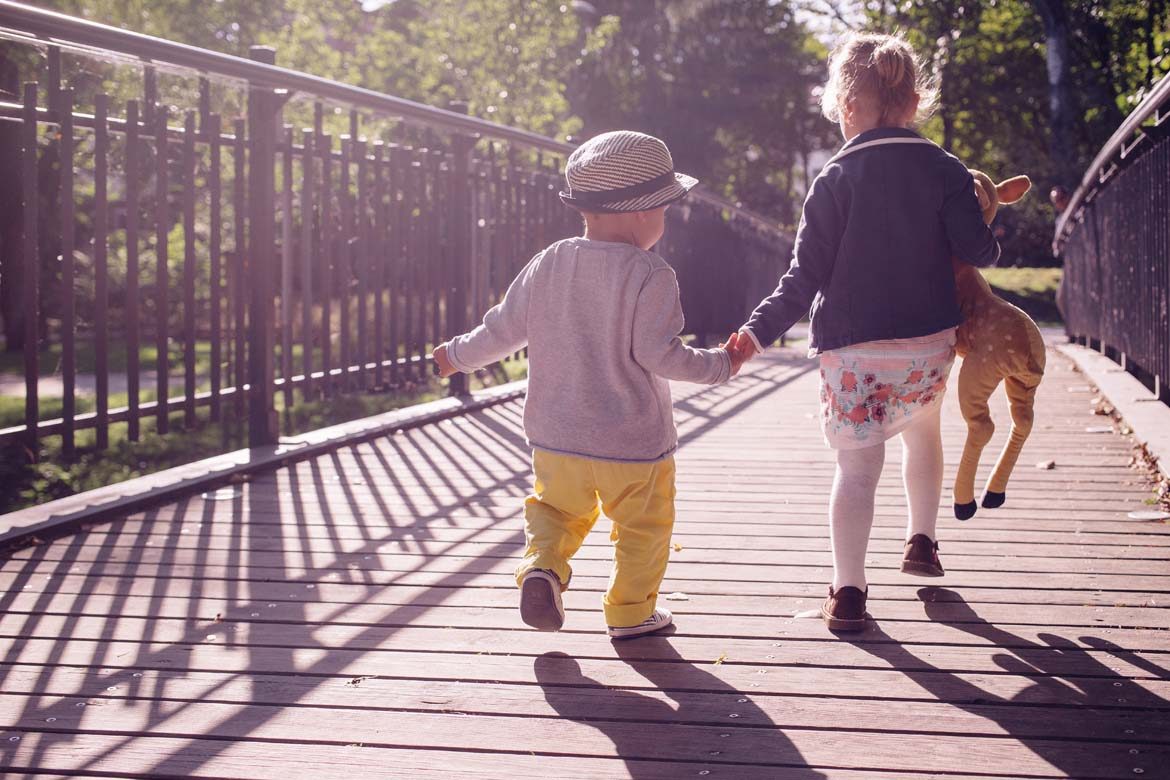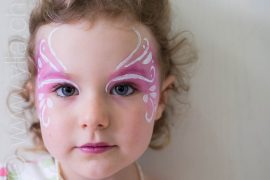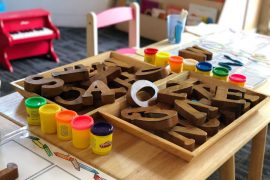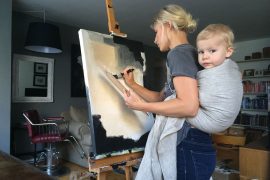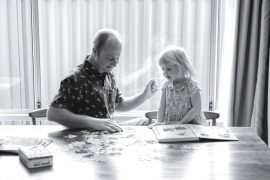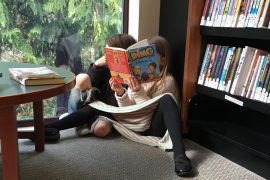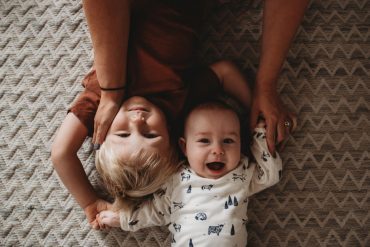Your child’s feet have to carry the weight of their body throughout their lifetime, and the shoes they wear in childhood can make (or break) their future foot health.
The bones in a child’s feet are formed from soft, pliable cartilage which doesn’t solidify into bone until approximately 5 years of age.
During those crucial first few years the foot needs as much room as possible to grow and form naturally, without being moulded by ill-fitting shoes.
Neglecting kids foot health invites not only future foot problems, but also problems in other parts of their body, such as their legs and back.
Barefoot is best
Barefoot walking helps form our balance, movement systems, and posture for life.
It’s essential for natural development of baby feet, and experts say that a child’s foot will develop more naturally the longer he/she is allowed to walk without shoes, so let them be barefoot as often as possible.
Barefoot may be best, but there are some times when shoes are important – for warmth, for protection, and also sometimes for decoration.
Use shoes when necessary, and for those times make sure you choose good-quality shoes that fit your child’s foot properly.
Measuring your child’s feet
To find out the correct size shoe for your child, you need to know the size of their feet.
The fastest and most efficient way to measure little feet is by getting them to stand on a piece of paper and drawing lines at the front and the back of their foot, and then measuring the lines.
If your child isn’t standing yet, apply pressure to the foot when drawing the lines, as the foot spreads quite a lot with weight on it.
Make sure to measure both feet as they’re likely to be different lengths.
Allow enough ‘wiggle room’
You may have heard of the ‘rule of thumb’ when buying your shoes – it’s the rule that there should be a thumb-length between your toes and the end of the shoe (which is approx 12-16mm).
However, for little kids, that’s just too much length at the end of a foot which might only be 12cm or so, and the extra length creates a trip hazard.
We recommend adding 5mm until their feet reach a length of about 15cm or they’re walking confidently.
Once they reach that 15cm mark you can start adding a full 1cm and then rounding up. (Rounding up means 5mm or 1cm is the MINIMUM amount you should add for ‘wiggle room’).
Ignore shoe sizes
Now you know what size feet your child has, you can look for the right size shoes.
However as an Austrian study found that 97% of marked shoe sizes are wrong (some by up to 2cm), you can’t rely on the marked shoe size. The inner length measurement is the ONLY measurement that counts.
To find the inner length measurement, take a tape measure with you and physically measure inside the shoe – or if it has a removable sole, you can pull that out and measure it.
Remember that the inner length measurement you’re looking for should be at least 5mm longer than your baby’s longest foot length.
They look quite big, is that right?
Once you’ve bought the right-sized shoes, you might put them on your toddler and think “Gosh, they look way too big”. That’s NORMAL.
By the time your baby turns one, their feet will be almost half of their adult foot size. This means that little feet shod in good-fitting spacious shoes can look rather large.
It’s very hard to buy dainty toddler shoes, and for good reason – toddlers don’t have dainty feet.
This is a much more serious problem for little girls, and as a result women tend to have four times as many foot problems as men in later life.
By all means choose the cutest shoes you can find, but without compromising on space for your child’s feet to grow properly. Expect them to look a little big for your child. It’s perfectly normal.
What to look for in a good-quality pair of shoes
They should be foot-shaped
Most toddler feet are shaped like that cartoon footprint with a narrow heel, wide front, and spread-out toes.
So shoes should be the same shape – narrower at the heel, with plenty of room and width in the toe area, a secure fastening, a supportive heel cup (the heel is the only place a shoe should ‘fit’ the foot), and obviously a flat heel.
They should be breathable
Strangely, kid’s feet sweat twice as much as adult feet.
This excess sweat means they’re more susceptible to blisters, slipping in their shoes, and stinky feet!
That’s why you should only choose socks and shoes made of breathable, absorbent material such as cotton, canvas or leather.
Avoid synthetics as they encourage sweating, and don’t ‘give’ much so they tend to rub more.
They should be flexible
Shoes need plenty of flexibility so children can bend and flex their feet naturally.
Make sure shoes have lightweight flexible shoes that will allow good freedom-of-movement for your toddler – the sole should bend easily to at least 55 degrees at the ball of the foot.
A toddler trying to walk in hard soles ends up doing that horrible clumping flat-footed walk because their feet simply can’t bend naturally.
In general the softer the sole, the better – as softer soles are more like walking barefoot.
They should have a back – even summer styles
Avoid backless styles as they force the foot and toes to curl to keep the shoe from falling off.
With backless styles (including jandals) walkers are forced to take shorter steps, and toe muscles are constantly activated, so it alters how we naturally walk.
A well-fitting shoe should be fastened onto the foot so that it follows the foot in ANY movement, without needing effort from the foot to keep it on.
Kid’s feet grow like weeds, so measure measure MEASURE
Everyone knows that children’s feet grow fast, but infant feet grow the fastest of all. That’s why it’s SO important to measure your child’s feet – and the inside of their shoes – at least every season, but preferably every month.
Consider yourself lucky if shoes last a season! We know that can make it very expensive, but it’s better to have good-fitting ‘cheap’ shoes than too-small ‘expensive’ shoes. Price is not always an indicator of quality.
As the central nervous system isn’t fully developed yet so your child actually can’t feel when shoes are squashing or damaging them – it doesn’t hurt – so YOU need to be the one that checks if they fit properly.
So measure often, and measure both the feet AND the current shoes to make sure they still fit.
You need to increase shoe size BEFORE your child’s toes touch the end of the shoes.
The 20th pair of shoes is just as important as the 1st
First shoes are important, but so is every pair of shoes until your child is at least 5 years old.
Choose good-quality well-fitting shoes for the first 5 years of your child’s life, and you’ll set them up for a lifetime of healthy feet.
Check out our other Hot Topic on:
Measuring kids feet
Baby clothes size chart
Benefits of merino wool clothing for kids
Source: This article was written by Julie at Bugalugz – little shoes at little prices. Julie is a single mum by choice who has a little “thing” for shoes! Bugalugz allows her to work from home around her daughter which is priceless. Bugalugz shoes are good quality, simple, unpretentious shoes that are soft and flexible for little feet.
Â

